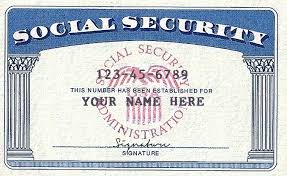
How many times have you ignored someone to look through social media? How many times have you or someone you know have been affected by what someone has said on social media? Social media causes us to disconnect from our surroundings but also allows us to connect with one another. Thus, social media is a double-edged sword. Therefore, I propose limiting social media through age. To do this, I propose enacting a limitation of social media usage on all citizens through creating an online identification number similar to a social security number. This online identification number is given at birth and is required for access to all social media websites upon registration. A system will be put in place that will only allow two hours of time to social media to each online identification number. Meaning, that each person would only be able to use social media for two hours. Thus, my proposal will limit social media in order for the benefit of our society.
The reason to limit social media is because social media limits your perspective of the outside world. This is due to the user becoming overly self-conscious as they seek the approval of others. An example of this would be when UCLA conducted a study of 32 teenagers: “The 32 teenagers, ages 13-18, were told they were participating in a small social network similar to the popular photo-sharing app, Instagram. In an experiment at UCLA’s Ahmanson–Lovelace Brain Mapping Center, the researchers showed them 148 photographs on a computer screen for 12 minutes, including 40 photos that each teenager submitted, and analyzed their brain activity using functional magnetic resonance imaging, or fMRI. Each photo also displayed the number of likes it had supposedly received from other teenage participants — in reality, the number of likes was assigned by the researchers” (Wolpert, 2018). “We showed the exact same photo with a lot of likes to half of the teens and to the other half with just a few likes,” Sherman said. “When they saw a photo with more likes, they were significantly more likely to like it themselves. Teens react differently to information when they believe it has been endorsed by many or few of their peers, even if these peers are strangers” (Wolpert, 2018). A lot of people may say that the phenomenon of seeking approval from others is exclusive to teenagers, but Nathan Dewall, a psychologist at the University of Kentucky says, “that acceptance—in romantic relationships, from friends, even from strangers—is absolutely fundamental to humans” (Dewall, 2011).
Social media also provides a platform for individuals with heinous intentions to harm others. The reason heinous individuals thrive in social media is because social media provides anonymity. Anonymity allows people to commit more heinous actions than when a name is attached to their face. This is evident in widespread trolling done on social media. In order to know how anonymity protects trolls we need to know what trolls are and the reasons behind their behavior. Pam Ramsden, a psychology lecturer at the University of Bradford, defines trolling and their intents as “Trolling is a relatively new term that is used to describe online behaviour that is disruptive, offensive and hurtful towards other internet users. Trolls intend to provoke a reaction from others which allows for an escalation in their abusive behaviour. The extent to which they participate in negative behaviour can range from annoyance to extreme cruelty, such as posting abusive messages on memorial pages.” (Ramsden, 2017). Ramsden goes on to explain the reason why anonymity provides a perfect place for trolls “Trolling has been explained by a psychological concept called the “online disinhibiton effect”. This effect suggests that social barriers to negative behaviour are lowered because of the way the internet allows users to remain anonymous and invisible. People are allowed to express themselves more freely than they would in face-to-face encounters and disregard moral responsibilities. For anonymous users, there are no repercussions for bad behaviour” (Ramsden, 2017). Creating an online identification number would increase the accountability for these individuals who commit heinous acts, allowing law enforcement officials to react quickly. An online identification number will also force the trolling individuals to face social repercussions for their actions. Therefore, this proposal of limiting social media use should be implemented in order to protect the people from themselves.
There are a lot of valid concerns with this proposal. Firstly, a lot of people will claim that limiting social media is a violation of the First Amendment. People likely to use this argument are people who try to abide by the founding fathers wishes of this great nation the most. Secondly, that the beauty of social media is that the user does not need to use their true name, and that by attaching the user to an online identification number, that the proposal would defeat the purpose of social media. People likely to use this argument are people afraid that their comfortability of being anonymous will be compromised if online identification numbers are implemented. Thirdly, that politicians would use online identification numbers to commit heinous deeds. The people likely to use this concern in an argument are people who have no faith in the government. Fourthly, that the theft of an online identification number will have the same impact on an individual as a stolen social security number. As in, the stealing of an online identification number will cause the individual to face perils in employment and social circles as the thief could pretend to be the honest individual. The main opposition likely to use this concern into an argument would be people who have the utmost concern with safety. The fifth concern would be that businesses would need social media access much longer than two hours. The main opposition to use this argument would be businesses executives, businessmen and businesswomen.
Now, onto the first concern that people believe that limiting social media is a violation of the First Amendment. The First Amendment guarantees the freedom of speech, freedom of religion, freedom of press, and the right to petition the government peacefully. However, freedom of speech does not include the right to make or distribute obscene materials or actions that incite harm to others (Administrative Office of the U.S. Courts, n.d.). By limiting the amount of time used in social media and issuing an online ID we can monitor the obscene materials and the amount of actions that incite harm to others by holding them accountable.
The second concern that an online identification number will defeat the purpose of social media as it attaches the identity to the user. This is simply not true as there are many uses of social media that does not require people to be anonymous. Social media will facilitate communication, encourage collaboration, provide a platform for reviews and opinions, enable brand monitoring, allow political activity and news reporting, crowdfunding, and many other uses (Fernando, 2018).
The third concern that politicians would use online identification numbers to commit heinous deeds is valid. However, is this not the fault of the people who elected these vile politicians. The wise John Locke says, “that where the society is dissolved, the government cannot remain” (Locke, 1764). Thus, if the people find out that the online identification numbers were being used by politicians in a villainous way then they must oust those politicians when election time comes.
The fourth concern that the theft of an online identification number could inflict massive damage onto an individual similar to the effect of a social security card being stolen. The possibility of an online identification number being stolen is something that cannot be denied as the possibility of theft exists. However, first we must dismiss the notion that an online identification number will be have similar safe-guards as a social security card. Pre-2011 social security cards were something fairly easy to hijack as the first three numbers were according to the state the person was registered (Morse, 2011). In order to avoid the security problems that a social security number has, the online identification number will be a product of random number generation with computers and will consist of twelve numbers opposed to nine total numbers in social security numbers. The increased total amount of numbers and the fact that the numbers will be randomly generated will make the online identification number secure.
The fifth concern that businesses will need more than two hours of social media access is another valid concern. The proposal will consist of a provision for businesses and the self-employed that allows them twenty-four-hour access to social media. Twenty-four-hour access will be achieved by giving each business a special online identification number and each self-employed person a separate online identification number for business purposes of promoting their business. To obtain this separate online identification number, the business or self-employed person must apply for this number. If self-employed they must list why their business is a business and not a hobby, similar to the tax code provisions. If they can prove that their business is a business and not a hobby, then they will be granted the special online identification number.
Overall, the implementation of our proposal of online identification numbers will ultimately cause the limit of social media use to fall to two hours a day. I desperately urge you, the person who has the power to implement this proposal, to deeply think about all the concerns that people have with this proposal, the people themselves, and you will reach the right answer.
Works Cited
Fernando, P. (2018, April 04). Social Media and its uses. Retrieved July 29, 2018, from https://www.liquidlight.co.uk/blog/article/social-media-and-its-uses/
Administrative Office of the U.S. Courts (n.d.) What Does Free Speech Mean? Retrieved July 29, 2018, from http://www.uscourts.gov/about-federal-courts/educational-resources/about-educational-outreach/activity-resources/what-does
Wolpert, S. (2016, May 31). The teenage brain on social media. Retrieved July 29, 2018, from http://newsroom.ucla.edu/releases/the-teenage-brain-on-social-media
Dewall, N. C. (2011, August 12). Social Acceptance and Rejection: The Sweet and the Bitter. Retrieved July 29, 2018, from https://www.psychologicalscience.org/news/releases/social-acceptance-and-rejection-the-sweet-and-the-bitter.html
John Locke, Two Treatises of Government, ed. Thomas Hollis (London: A. Millar et al., 1764). Retrieved 7/29/2018 from the World Wide Web: http://oll.libertyfund.org/titles/222
Morse, S. P. (2011). Decoding Social Security Numbers in One Step. Retrieved July 29, 2018, from https://stevemorse.org/ssn/ssn.html
Ramsden, P. (2017, February 27). Internet’s cloak of invisibility: How trolls are made. Retrieved July 29, 2018, from https://theconversation.com/internets-cloak-of-invisibility-how-trolls-are-made-73220


